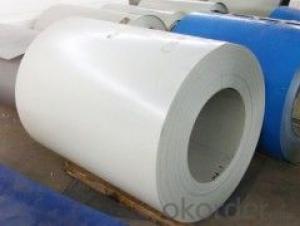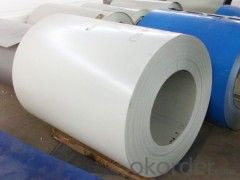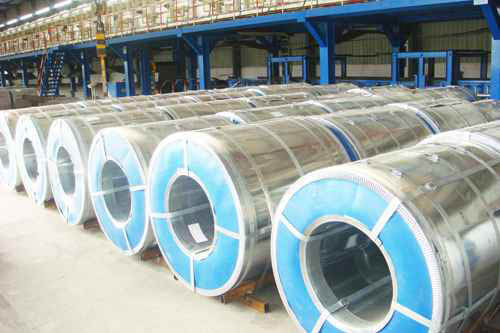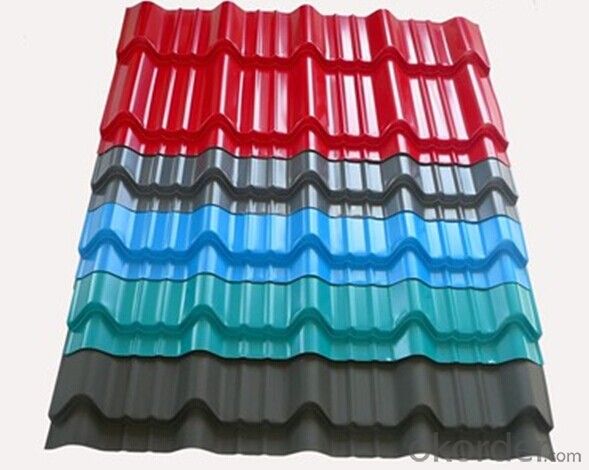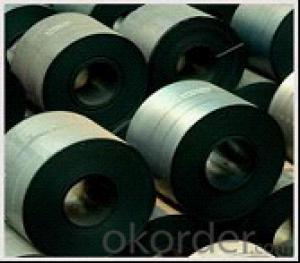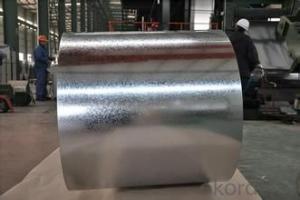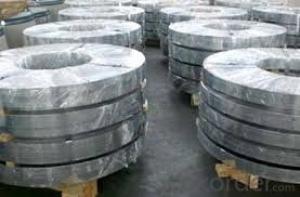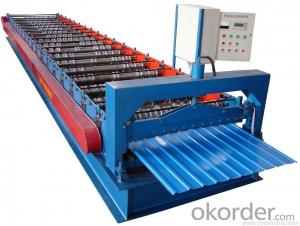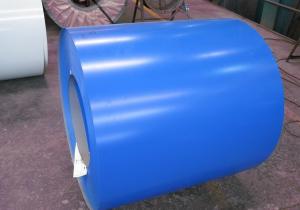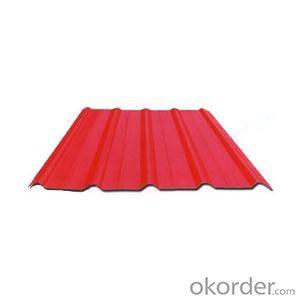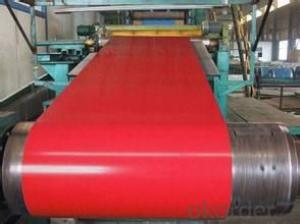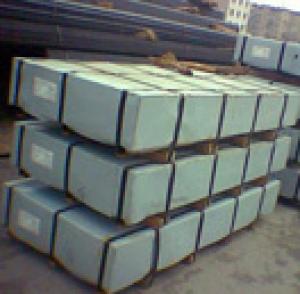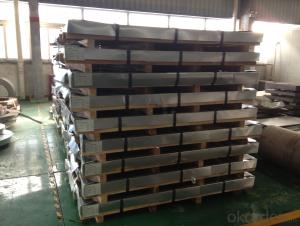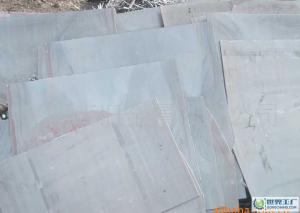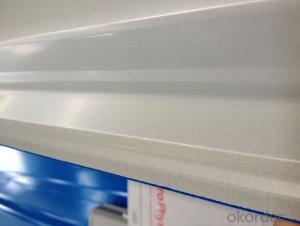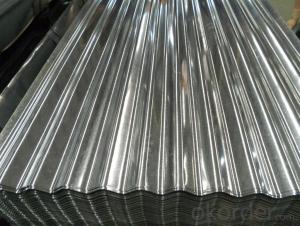Prepainted Corrugated Steel Sheet or Coil
- Loading Port:
- Shanghai
- Payment Terms:
- TT OR LC
- Min Order Qty:
- 100 m.t.
- Supply Capability:
- 10000 m.t./month
OKorder Service Pledge
OKorder Financial Service
You Might Also Like
1. Pre-Painted Galvanized/Aluzinc Steel Coil Description:
With GI as base material, after pretreatment (degrease and chemical treatment ) and liquid dope with several layers of color, then after firing and cooling, finally the plate steel is called pre-painted galvanized (aluzinc) steel. Pre-painted galvanized steel is good capable of decoration, molding, corrosion resistance. It generally displays superior workability, durability and weather resistance.
2.Main Features of the Pre-Painted Galvanized/Aluzinc Steel Coil:
• Excellent process capability
• Smooth and flat surface
• Workability, durability
• Excellent heat resistance performance
• High strength
• Good formability
• Good visual effect
3.Pre-Painted Galvanized/Aluzinc Steel Coil Images
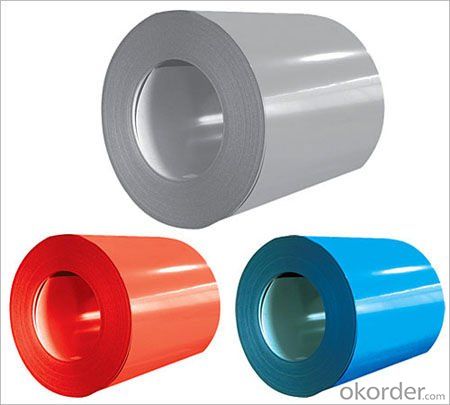
4.Pre-Painted Galvanized/Aluzinc Steel Coil Specification
Standard: AISI, ASTM, BS, DIN, GB, JIS
Grade: DX51D, DX52D
Thickness: 0.17-2.0mm
Brand Name: KMRLON
Model Number: coil
Type: Steel Coil
Technique: Cold Rolled
Surface Treatment: Coated
Application: Boiler Plate
Special Use: High-strength Steel Plate
Width: 20-1250mm
Length: customized
commoidty: pre-painted galvanized steel coil
Thickness: 0.13-4.0mm
width: 20-1250mm
zinc coating: 40-180g/m2
printing thickness: top side: 20+/-5 microns, back side: 5-7 microns
color: all RAL color
surface treatment: color coated
coil weight: 4-7 tons
coil ID: 508/610mm
packaging: standard seaworthy packing
5.FAQ of Pre-Painted Galvanized/Aluzinc Steel Coil
1. What’s the application of this product?
Roof, roof structure, surface sheet of balcony, frame of window, etc.
2. What’s the brand of the paint?
We use the best brand of all of the word—AKZO.
3. How about your company?
A world class manufacturer & supplier of castings forging in carbon steel and alloy steel,is one of the large-scale professional investment casting production bases in China,consisting of both casting foundry forging and machining factory. Annually more than 8000 tons Precision casting and forging parts are exported to markets in Europe,America and Japan. OEM casting and forging service available according to customer’s requirements.
4. How to guarantee the quality of the products?
We have established the international advanced quality management system,every link from raw material to final product we have strict quality test;We resolutely put an end to unqualified products flowing into the market. At the same time, we will provide necessary follow-up service assurance.
5. How long can we receive the product after purchase?
Usually within thirty working days after receiving buyer’s advance payment or LC. We will arrange the factory manufacturing as soon as possible. The cargo readiness usually takes 15-25 days, but the shipment will depend on the vessel situation.
- Q: What is the process of hot-dipping steel sheets?
- The process of hot-dipping steel sheets involves immersing them in a bath of molten zinc to create a protective coating. The steel sheets are carefully cleaned and pre-treated before being dipped into the zinc bath. The high temperature of the bath causes the zinc to bond with the steel, forming a corrosion-resistant layer. This process helps to enhance the durability and lifespan of the steel sheets, making them suitable for various applications in construction, automotive, and manufacturing industries.
- Q: Are the steel sheets resistant to warping or twisting?
- Yes, steel sheets are highly resistant to warping or twisting. Steel is known for its exceptional strength and rigidity, making it less susceptible to deformation under stress or pressure. The inherent properties of steel, such as its high tensile strength and low thermal expansion, contribute to its resistance to warping or twisting. Additionally, steel sheets are often manufactured with precise dimensions and uniform thickness, further enhancing their resistance to deformation. This makes steel sheets a reliable and durable choice for various applications that require stability and structural integrity.
- Q: Can the steel sheets be bent without cracking?
- Yes, steel sheets can be bent without cracking. The ability of steel sheets to be bent without cracking depends on a few factors such as the type and grade of steel, the thickness of the sheet, and the bending process used. Generally, steel sheets can be successfully bent without cracking as long as the bending radius and angle are within the recommended limits for that specific type and grade of steel. Additionally, preheating the steel sheet before bending can also help reduce the risk of cracking. It is important to follow proper bending techniques and use appropriate tools to ensure successful and crack-free bending of steel sheets.
- Q: Are steel sheets resistant to high-pressure environments?
- Yes, steel sheets are generally resistant to high-pressure environments due to their high tensile strength and durability.
- Q: What is the process of applying anti-slip patterns to steel sheets?
- The process of applying anti-slip patterns to steel sheets typically involves using specialized equipment and techniques to create raised patterns on the surface of the sheets. This is often done through a process called embossing, where the steel is passed through a series of rollers or dies that imprint a textured pattern onto the surface. This pattern helps to provide traction and prevent slippage on the steel sheets, making them safer to walk on or handle in various applications.
- Q: Are steel sheets resistant to electromagnetic interference?
- Yes, steel sheets are generally resistant to electromagnetic interference due to their high electrical conductivity and ability to block or absorb electromagnetic waves.
- Q: Are steel sheets suitable for elevator shafts or cabin interiors?
- Yes, steel sheets are suitable for both elevator shafts and cabin interiors. Steel is a widely used material in the construction industry due to its strength, durability, and versatility. When it comes to elevator shafts, steel sheets are commonly used for their ability to withstand heavy loads and provide structural support. They offer excellent fire resistance and can withstand extreme temperatures, making them a safe choice for elevator shafts. In terms of cabin interiors, steel sheets offer various advantages. They can be easily fabricated into different shapes and sizes, allowing for customization and flexibility in design. Steel sheets can be painted or coated to provide a smooth and aesthetically pleasing finish. They are also highly resistant to wear and tear, ensuring long-term durability in a high-traffic area like an elevator cabin. Moreover, steel sheets are known for their soundproofing properties, which is crucial for elevator cabins to provide a comfortable and quiet experience for passengers. They are also resistant to moisture and corrosion, making them suitable for elevator cabins in humid or coastal areas. Overall, steel sheets are an excellent choice for elevator shafts and cabin interiors due to their strength, durability, versatility, fire resistance, soundproofing capabilities, and resistance to moisture and corrosion.
- Q: Can steel sheets be used for containers or storage units?
- Yes, steel sheets can definitely be used for containers or storage units. Steel is a highly durable and strong material that is commonly used in the construction of containers and storage units due to its ability to withstand heavy loads and extreme weather conditions. Steel containers and storage units provide a secure and reliable solution for storing various items such as household goods, tools, equipment, and even larger items like vehicles. Steel sheets used for containers and storage units are often reinforced with additional features such as locking mechanisms, insulation, and ventilation to enhance their functionality. Additionally, steel containers and storage units are also portable and can be easily transported to different locations if needed. Overall, steel sheets are an excellent choice for containers and storage units due to their strength, durability, and versatility.
- Q: Can steel sheets be customized in terms of size and shape?
- Yes, steel sheets can be customized in terms of both size and shape. They can be cut and shaped according to specific requirements to meet the needs of different applications.
- Q: What is the difference between hot-rolled and cold-rolled steel sheets?
- The main difference between hot-rolled and cold-rolled steel sheets lies in the manufacturing process and the resulting characteristics of the steel. Hot-rolled steel sheets are made by heating a large steel slab and passing it through rollers at high temperatures. This process allows the steel to be easily shaped and formed into various sizes and thicknesses. The high temperature also helps to eliminate any residual stress within the steel, making it more ductile and malleable. As a result, hot-rolled steel sheets have a rougher surface finish and may have some scale, which is a thin oxide layer on the surface. However, they also tend to be less expensive and have a wider range of available sizes. On the other hand, cold-rolled steel sheets are made by cooling down the hot-rolled steel and passing it through rollers at room temperature. This process not only reduces the thickness of the steel but also improves its surface finish and dimensional accuracy. Cold-rolling imparts a smooth and shiny appearance to the steel sheets, making them ideal for applications where aesthetics are important. Additionally, the cold-rolling process increases the strength and hardness of the steel, making it more suitable for high-stress applications. However, the cold-rolled steel sheets are generally more expensive due to the additional processing involved. In summary, hot-rolled steel sheets offer better formability and lower cost, but have a rougher surface finish and may have some scale. Cold-rolled steel sheets, on the other hand, have superior surface finish, dimensional accuracy, and strength, but are more expensive. The choice between hot-rolled and cold-rolled steel sheets depends on the specific requirements of the application, including the desired surface finish, strength, and cost considerations.
Send your message to us
Prepainted Corrugated Steel Sheet or Coil
- Loading Port:
- Shanghai
- Payment Terms:
- TT OR LC
- Min Order Qty:
- 100 m.t.
- Supply Capability:
- 10000 m.t./month
OKorder Service Pledge
OKorder Financial Service
Similar products
Hot products
Hot Searches
Related keywords
